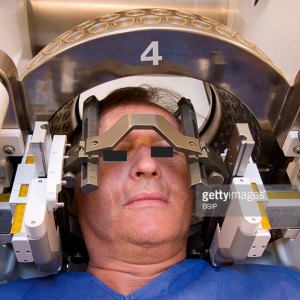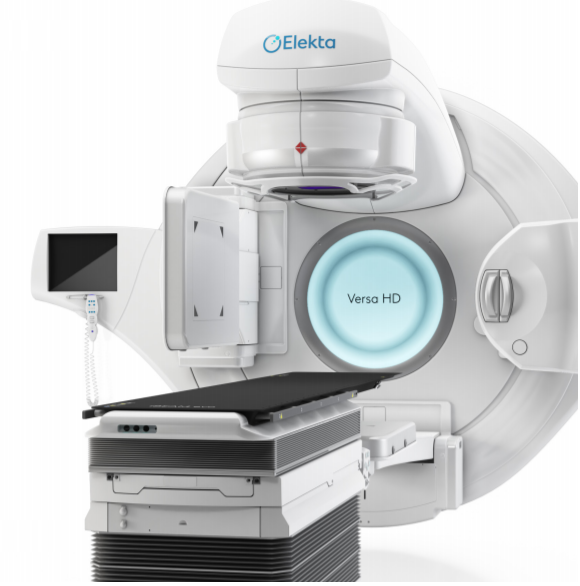Stereotactic Radiotherapy
The high energy beams used during radiotherapy, could be sent to the targets from different planes in selected patients. It is called stereotactic radiotherapy or radiosurgery like stereo music. This radiotherapy allows us to give ablative high doses as in surgery for selected patients. The decision of surgery versus radiosurgery should be done in the multidisciplinary tumor board. In general, the side effects of the radiosurgery is tolerated better than surgery.
Who is fit for stereotactic radiotherapy?
1- As a curative treatment for lung cancers that are not suitable for surgery due to insufficiency in lung function or other organ functions in early stage disease.2-Treatment of brain metastases of appropriate number and size.
3-Operation cavity irradiation in operated brain metastases
4-In the treatment of progressing intracranial metastases that have previously undergone whole brain irradiation.
5-In the treatment of metastases in liver, adrenal glands, lungs and bones as an adjunct to systemic treatments in patients with few metastases in the body (i.e. oligometasis).
6-Treatment of spinal metastases of appropriate number and size.
7-In the treatment of lung metastases of appropriate number and size, whose source is elsewhere in the body but has metastasized to the lung.
8-Treatment of appropriate pancreatic tumors.

Stereotactic radiotherapy
It is a special kind of radiotherapy that can protect the normal tissues as much as possible while ensuring that the rays sent from different planes. This approach will help to increse the total doses that will cause maximum damage to the tumor.

Gammaknife®, produced in the 1960s, has been used for stereotactic radiotherapy in both metastatic and primary tumors located in the brain.
In Gammaknife® applications, the comfort problem caused by the screws placed on the patient's skull and the necessity of the treatments to be applied in a single session led to the need to search for alternative technologies.

In the 1990s, the development of robotic radiotherapy systems followed by new technologies such as Versa HD-Hexapod ® rapidly increased the use of linear accelerators in stereotactic radiotherapy.
Examples of stereotactic radiotherapy with linear accelerator

